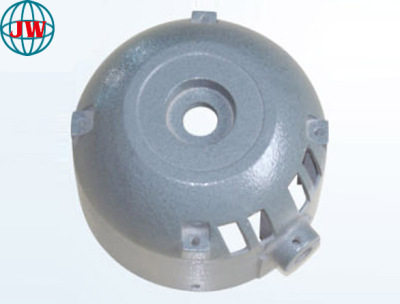
Die Casting Molds: The Unsung Heroes Shaping Modern Manufacturing
2025-07-22 15:38
In the intricate web of global production, die casting molds stand as silent architects, defining the precision and efficiency of countless industrial processes. These specialized tools are the backbone of die casting—a manufacturing method where molten metal is forced into a mold cavity under high pressure to form complex, high-integrity parts. As industries from automotive to electronics demand lighter, stronger, and more cost-effective components, the role of die casting molds has never been more critical.
What Makes Die Casting Molds Indispensable?
Die casting molds are engineered to transform raw metal into functional art. Crafted from high-performance materials like H13 hot-work steel or pre-hardened steel, they must withstand extreme temperatures (up to 700°C for aluminum die casting) and repeated pressure cycles—often exceeding 10,000 psi. Their design dictates every detail of the final die cast part: from wall thicknesses as thin as 0.5mm to intricate internal geometries, such as cooling channels in automotive engine parts or threaded inserts in consumer electronics.
Unlike disposable sand molds, die casting molds are built for longevity. A well-maintained mold can produce 100,000 to over 1 million parts, making die casting ideal for high-volume production. This reusability drives down per-unit costs, a key reason why 75% of aluminum automotive parts and 90% of zinc alloy electronics components rely on die casting molds.
Precision in Every Detail: The Art of Mold Design
Modern die casting molds are born from digital innovation. Using computer-aided design (CAD) and simulation software, engineers optimize mold flow paths to ensure molten metal fills every cavity uniformly, eliminating defects like porosity or cold shuts. 3D printing has further revolutionized this process: prototype molds can now be produced in days instead of weeks, allowing manufacturers to test designs and refine mold geometry before full-scale production.
Take the mold for a smartphone chassis, for example. It must integrate 15+ mounting points, micro-textured surfaces for grip, and recesses for camera lenses—all in a part smaller than a credit card. Such precision is only possible with die casting molds machined to tolerances of ±0.002 inches, ensuring each chassis fits seamlessly with screens, batteries, and circuit boards.
Materials: The Foundation of Durability
The choice of mold material directly impacts performance. For aluminum die casting, H13 steel is preferred for its heat resistance and toughness, preventing warping during repeated cycles. Zinc die casting molds, which operate at lower temperatures (380–420°C), often use pre-hardened steel like P20, balancing durability with cost.
Advanced alloys are pushing boundaries further. Japanese manufacturers, for instance, have developed chrome-vanadium steel molds that extend service life by 30% compared to traditional H13, critical for mass-producing electric vehicle (EV) components. Meanwhile, surface treatments like nitriding or PVD coating reduce friction between mold and molten metal, minimizing wear and reducing maintenance downtime.
Driving Innovation Across Industries
Die casting molds are catalysts for progress in key sectors:
Automotive: As EV adoption surges, aluminum die casting molds for battery enclosures and motor housings are in high demand. These molds must produce parts weighing 50+ kg with zero leaks, ensuring battery safety. Companies like Tesla use giant molds (over 9 meters long) to cast entire underbodies in one piece, slashing assembly time by 40%.
Electronics: Miniaturization relies on zinc die casting molds for components like laptop hinges and smartwatch frames. These molds achieve micron-level precision, allowing parts to withstand daily use without deformation.
Aerospace: Magnesium die casting molds produce lightweight, high-strength parts for aircraft interiors, where every gram saved reduces fuel consumption. Strict aviation standards require these molds to undergo rigorous testing, including X-ray inspections to detect hidden flaws.
Challenges and the Road Ahead
Despite their strengths, die casting molds face challenges. High upfront costs—ranging from $50,000 for simple molds to $1 million+ for complex automotive tools—can deter small manufacturers. Additionally, global supply chain disruptions have led to steel shortages, delaying mold production by 2–3 months in 2024.
Innovation is addressing these issues. AI-powered mold monitoring systems now track temperature, pressure, and wear in real time, predicting maintenance needs and extending mold life. Meanwhile, sustainable practices like recycling mold steel and using water-based coolants are reducing the industry’s environmental footprint.
Conclusion
Die casting molds may operate behind the scenes, but their impact is visible in every car, smartphone, and appliance we use. As technology advances, these tools will continue to enable lighter, stronger, and more sustainable products—proving that in manufacturing, the most important innovations often start with the mold. For industries racing to meet evolving demands, investing in high-quality die casting molds isn’t just a choice—it’s a necessity
Get the latest price? We'll respond as soon as possible(within 12 hours)












